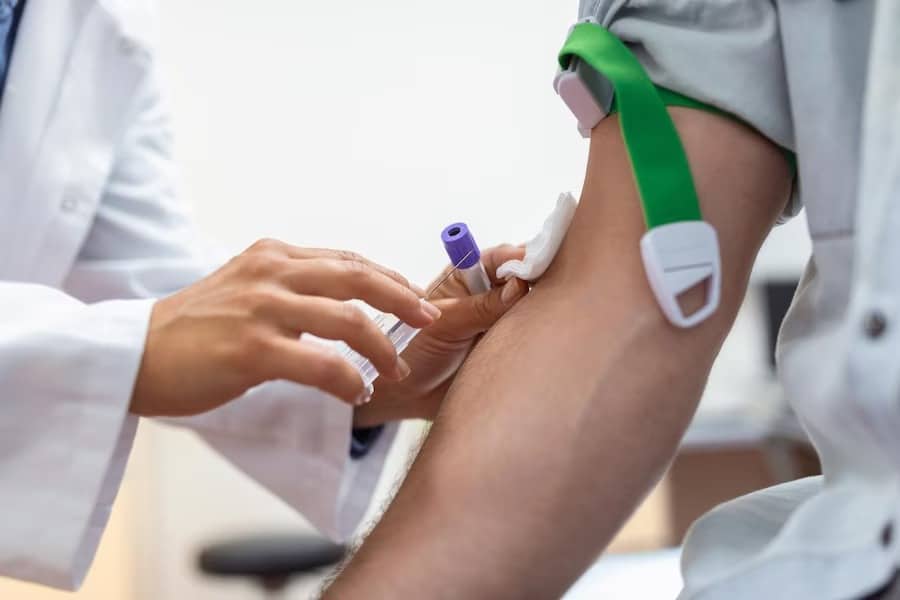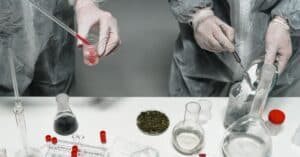
Blood tests are a crucial part of modern medicine and health care. A blood test can provide valuable insights into your health – from diagnosing diseases to monitoring your progress. But just what happens during a blood test? In this blog post, we’ll explore everything you need to know about blood tests, from how they work to what happens during the process. We’ll also discuss some of the most common types of blood tests, so you can be informed when it comes time for your own testing.
When you visit your doctor or medical professional for a blood test visit a blood test laboratory in Patiala, the process typically begins with a few preliminary questions. These questions will help the doctor or medical staff to determine which type of blood test is needed and what information they need to collect. Then, a trained technician will draw a sample of your blood. The sample will be collected using a needle and syringe, or sometimes a finger prick device that collects just enough blood for testing. Once the sample is collected, it will be sent to a laboratory where it undergoes analysis. The lab technicians use specialized instruments and techniques to analyze the sample, looking at various biomarkers such as proteins, hormones, minerals, and other substances. The results of these tests can help diagnose diseases and conditions or monitor changes in health over time. The blood test is a simple and quick way to check your health. A small sample of blood is taken from a vein in your arm and sent to a laboratory for testing.
The first step in the process is to draw a sample of blood. During this step, a healthcare professional will cleanse an area on your arm and insert a needle into a vein. The needle is connected to a tube that transfers the blood sample into a vial or tube.
Once the sample has been collected, it will be sent to a blood test laboratory in Patiala. Here, the sample will be tested for various markers such as glucose levels, cholesterol levels, red and white blood cell counts, and other metrics that indicate overall health status.
The results of these tests are usually available within 24-48 hours from when the sample was taken. Your doctor will review the results with you and determine what further steps should be taken to ensure your health and safety.
Blood tests can be used to check for a variety of things, including:
- Anemia
- Infection
- Diabetes
- Kidney disease
- Cancer
- Heart disease
Why Do People Have Blood Tests?
There are many reasons why people might have blood tests. Blood tests can be used to check for a wide range of conditions, including anemia, infections, clotting disorders, and cancer. They can also be used to monitor the health of people who have chronic conditions, such as diabetes or heart disease.
Blood tests can help doctors diagnose medical conditions, assess how well organs such as the liver and kidneys are working, check levels of medications in the body, and screen for certain genetic disorders. They can also be used to check cholesterol levels, measure hormones and vitamins in the blood, and detect allergies.
How to Prepare for a Blood Test
When you have a blood test, a sample of blood will be taken from a vein in your arm. The process is quick and usually doesn’t hurt.
You don’t need to do anything special to prepare for a blood test. Just make sure you’re not fasting (not eating or drinking anything) for at least 8 hours before the test, as this can affect your results.
It’s also a good idea to wear a short-sleeved shirt or top so it’s easy for the health care professional to find a vein.
Before your blood test, tell your doctor if you’re taking any medications, including supplements and herbs, so they can make sure the results are accurate. If you’re pregnant or have other medical conditions, make sure your doctor knows about them too.
Risks of a blood test
There are very few risks associated with having a blood test. As with any medical procedure, there is always a slight risk of complications. The most common complication from a blood test is bruising or soreness at the injection site. In rare cases, people can have an allergic reaction to the needle or the antiseptic used to clean the skin before the needle is inserted. If you have a severe allergy, you should tell your doctor before having a blood test. Additionally, there is a risk of infection if the needle or equipment used is not sterile. It’s important to make sure that the laboratory you are using follows strict safety protocols.
Conclusion
A blood test is a valuable tool for diagnosing and monitoring health conditions. Knowing what happens during a blood test can help you feel more prepared when going into the lab, and less anxious about the process. The basic steps are having your finger pricked to draw a few drops of blood, then having those collected samples sent off to be tested in a blood test laboratory in Patiala. This typically takes several days before results can come back, so patience and understanding of the process are key!



